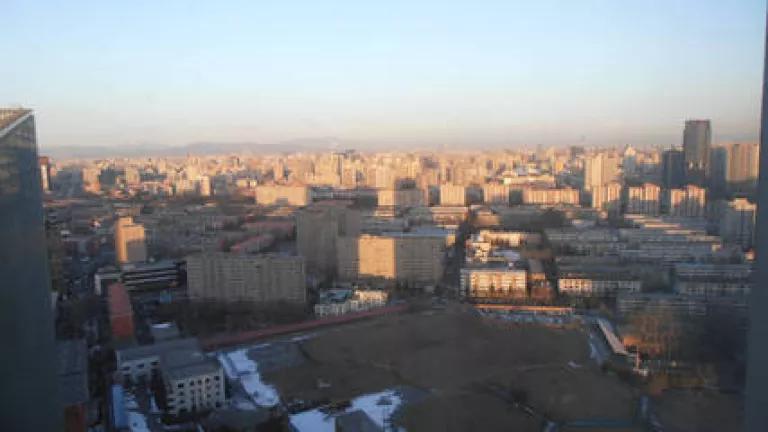
On Thursday, the State Council, (China’s cabinet) unveiled its long-awaited “Atmospheric Pollution Prevention Action Plan” ã 大æ°æ±¡æé²æ²»è¡å¨è®¡å ã in response to the severe air pollution that has increasingly plagued China. The plan calls the current air pollution situation “grim” and acknowledges that it is “harming people’s health and affecting social harmony and stability.”
China has seen some of the worst air pollution this year in recent memory, severe enough to become the number one cause for social unrest and cause a 15% drop in tourist visits to Beijing during the first half of 2013. The air pollution is also causing over a million premature deaths a year and billions of dollars in environmental damages.
The goal of the new plan is to improve the air quality of the entire country by 2017, while imposing stricter air pollution reduction guidelines in three key industrial areas surrounding Beijing, Shanghai and Guangzhou. Specifically, the plan pledges to:
- Reduce PM 10 levels in cities nationally by at least 10% from 2012 levels;
- Reduce PM 2.5 levels in Beijing/Tianjin/Hebei (BTH) by 25%, in the Yangtze River Delta (YRD) by 20%, and in the Pearl River Delta (PRD) by 15%.
- Control coal consumption by establishing medium and long term targets for coal consumption:
- Prohibit the approval of new coal-fired power plants in BTH, YRD and PRD (with the exception of combined heat and power plants), while requiring existing coal consuming projects to implement coal reduction and substitution projects.
- Reduce the proportion of coal in the energy consumption mix to 65% by 2017 (from around 67% in 2012).
- Achieve negative coal consumption growth in the three key air pollution areas (BTH, YRD and PRD) by replacing coal with electricity generated from natural gas and non-fossil fuel energy.
- Cut iron-making and steel-making capacity by 15 million tons in 2015.
- Control the number of automobiles on its roads: Beijing, Shanghai, Guangzhou and other large Chinese cities should “strictly” restrict the number of vehicles to curb pollution while other cities should have “reasonable” controls on the number of vehicles.
- Increase non-fossil fuel (wind, solar) from 9.1% in 2012 to 13% by 2017 and increase shale-gas production.
The plan also briefly mentions developing pollution controls for construction equipment and non-road mobile sources, including ships. Controlling marine emissions would have a major impact on reducing air pollution in the key industrial areas targeted by this plan, since they are also some of the largest and most densely populated port regions in the world. Civic Exchange, a Hong Kong-based think tank, estimates that introduction of an Emission Control Area (ECA) would reduce sulfur dioxide emissions from ocean-going vessels by 95 percent and particulate emissions by over 85 percent across the entire Pearl River Delta, reducing the number of avoidable deaths by 91 percent. We hope this new plan will give a strong boost to the regulation of marine emissions in China.
China’s comprehensive new plan is a major step in the right direction, although it could have gone a lot further. The new limits are still far below the levels recommended by the World Health Organization (Beijing’s average PM 2.5 levels will be reduced to about 60 mcg per cubic meter, compared to the WHO exposure limit of 10 mcg). This difference cannot be justified solely on economic grounds. As my colleague Dr. Yang Fuqiang told the South China Morning Post in this article, cities such as Beijing and Tianjin should be required to cut levels of PM 2.5 – the air pollutant most dangerous to human health – by more than 25 percent, since they have more economic resources.
The new plan could also have set quantified limits on coal consumption for key regions of China, but allows the regions to set their own limits. NRDC has been strongly advocating for a cap on coal consumption in China and is working with the government and other NGOs in China to develop an effective and enforceable coal cap policy for China. We believe that the five main components (with details from our colleague here) of setting an effective coal cap strategy consist of:
- Working with the largest coal consuming sectors and regions to help them develop integrated plans for capping coal use through more efficient technologies, fuel switching and closing outdated production capacity.
- Strengthening enforcement of coal consumption and emissions targets and standards through improved data and enforcement tools.
- Continuing to scale up energy efficiency and renewable energy.
- Developing responsible standards and best practices for shale gas and nuclear power development.
- Helping to implement carbon trading and carbon tax pilot programs.
The new plan is a much-needed signal that China is serious about tackling the root cause of air pollution by reducing its reliance on coal and other dirty fuels. But as always, the main thing to watch for going forward is how effectively China will measure and enforce these targets. And while you’re at it, don’t forget to also watch for the harvest moon.
This post was coauthored by my colleagues Alvin Lin and Christine Xu.
